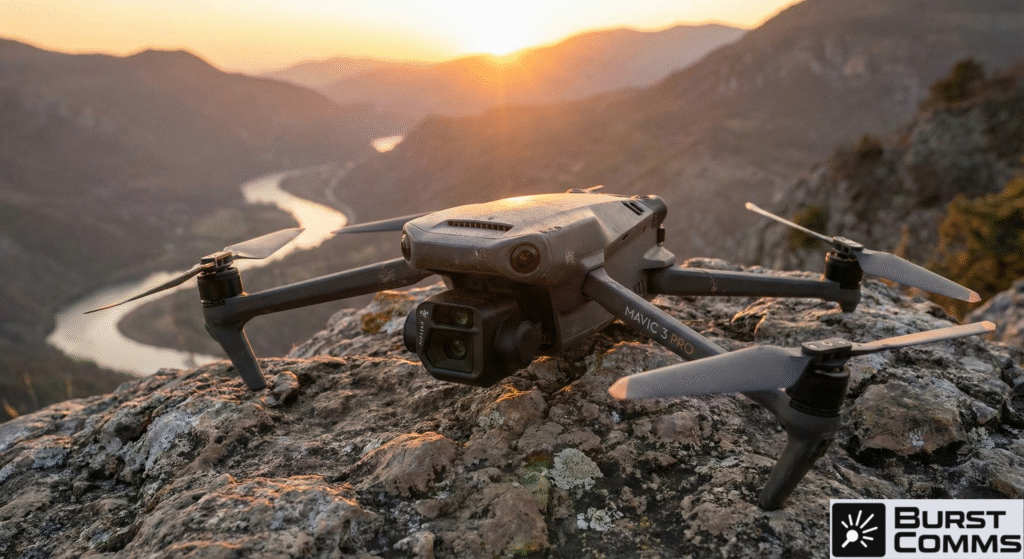
Precision airstrikes were once the exclusive domain of state militaries, wielding million-dollar platforms and laser-guided payloads. Now, the ability to carry out targeted destruction is being handed to anyone with a soldering kit, a backpack, and an internet connection. Loitering munitions, “kamikaze drones” in public parlance, are no longer anomalies. They’re infrastructure. And we’re only witnessing their first form.
Despite the headlines, this is not a new phenomenon. The roots trace back to Cold War SEAD missions, where anti-radiation drones like the Harpy were engineered to bait and kill radar arrays without risking human pilots.
The leap came not from theory, but from cost and convenience. Once microelectronics reached hobbyist pricing, lethality could be mass produced. The Switchblade 300 offered infantry squads on-demand airpower. Then came Ukraine, where drones were no longer a tool, just part of the weather.
But if you think that’s where the story ends, you’ve misunderstood the pattern.
The parallels are striking. In 1973, Israeli tanks met the Soviet AT-3 Sagger in the Sinai, and got decimated. That missile was manually guided, cheap, and terrifying. Its effectiveness wasn’t just about firepower; it was psychological. Tank crews reportedly broke down under the pressure of being hunted by a weapon they couldn’t outrun. Sound familiar?
Today’s FPV kamikaze drones operate on a similar principle. A joystick in one trench can direct an explosive payload straight into a $10 million tank. Just like with the Sagger, early drone strikes are guided, fragile, and require skilled operators. And just like with the Sagger, that won’t last.
The next phase is already emerging.
The Evolution Begins
History doesn’t repeat, but it does prototype. Anti-tank missiles evolved from manual systems to fire-and-forget monsters like the Javelin. Drones are on the same path.
What starts as joystick-controlled kamikaze strikes will morph into autonomous, loitering assassins. The terminal phase, when the drone drops signal and dives, is where most FPV strikes fail. But when computer vision replaces radio links, the drone no longer needs permission to kill. It simply locks on using visual-inertial navigation and finishes the job. No signal. No GPS. Just target acquisition and kinetic follow-through.
Eventually, these machines won’t just loiter, they’ll hibernate. Imagine a drone landing silently on a rooftop, watching a street below for hours. Then, the moment a target appears, it reactivates and strikes. You don’t fight that. You don’t jam that. You survive it, if you’re lucky.
The reaction from armoured warfare traditionalists is predictable: the tank is obsolete. We’ve heard that before too. In response to the ATGM wave, tanks evolved with composite armour, better sensors, and integrated infantry support. Now, they’re doing it again, cope cages and active protection systems are being bolted onto anything with tracks.
It’s messy. It’s reactive. But it’s not surrender.
New designs like the KF51 Panther and Abrams X are taking the next logical step: they’re becoming drone nodes themselves. Armed with loitering munitions, protected by integrated drone defences, and crewed by fewer humans hidden deeper in the hull. The gun isn’t the only weapon anymore. The tank has joined the swarm.
But there’s a limit to armour’s arms race. APS systems run out of interceptors. Cope cages trade survivability for visibility. At some point, cost exchange breaks down again. And the drone adapts first.
The real shift is philosophical. War has always been a machine for dehumanisation. Drones just finish the thought. Once battlefield environments saturate with electronic warfare and signal denial, human-in-the-loop becomes a liability. No signal? No problem. The drone decides.
The Pentagon’s Replicator program makes this explicit: the future of warfare is attritable autonomy. Thousands of semi-disposable, AI-driven machines coordinating in real time without oversight. Their mission parameters aren’t micromanaged, they’re suggested.
And in China, it’s even more explicit. PLA doctrine already embraces “intelligentized warfare.” The plan isn’t just to use drones, it’s to replace parts of the chain of command with algorithms.
If you’re wondering who holds moral accountability when an autonomous drone kills the wrong person, here’s your answer: no one. Or everyone. Or maybe it depends on who wrote the code.
This Is Not the Final Form
What we’re seeing now isn’t the end. It’s barely the beginning. Kamikaze drones are not the apex. They’re the spark.
Where they go next is where all weapons systems go once deployed en masse: toward autonomy, toward ubiquity, and toward optimisation at the expense of human control. That’s not a theory. That’s the direction of travel.
The “Drone Moment” is just the modern echo of the “Sagger Moment.” A challenge that seems existential, only to spark a new evolutionary arms race. This time, between learning machines and adaptive armour.
Who wins? Depends on who iterates faster.